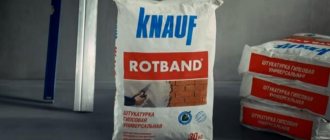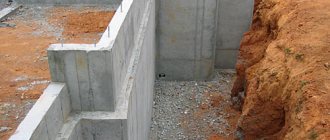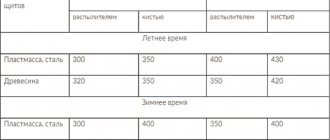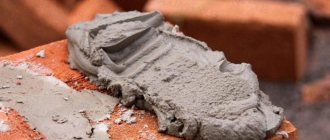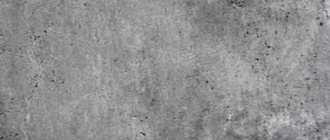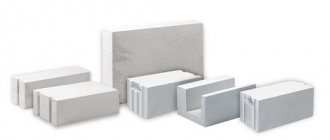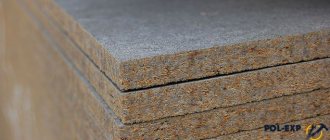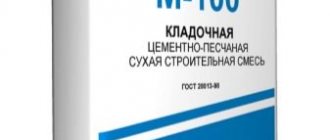Today, building materials are produced in a wide range. Each product has its own unique characteristics and properties. An example of high-quality compounds is concrete-contact primer. Thanks to the use of these products, it is possible to achieve strong tenacity between two opposing materials.
Modern primer allows you to reliably glue tiles to surfaces made of metal, wood and glass. The main function of Concrete Contact is to form a surface that is durable and prepared for fastening building materials.
Technical characteristics of the concrete composition - contact
To produce the presented composition, an acrylic primer was used. It contains components such as sand, cement and special additives, thanks to which it is possible to achieve strong adhesion. If a surface finished with putty or plaster is treated with Concrete Contact, the resulting result can be compared to a sandwich.
Geopolymer concrete composition and other technical data are indicated in the article.
The presented solution acts as oil, which prevents the pieces of bread from falling apart.
Everyone knows that a smooth concrete wall is difficult to plaster, therefore, for high-quality adhesion it is necessary to roughen the surface. This role in the composition is assigned to sand. It is this component that has excellent abrasive properties.
What grade of concrete is needed for a strip foundation can be found in this article.
During the application of Concrete Contact, the wall becomes like sandpaper, thanks to which you can achieve maximum adhesion to the finishing material and it will be easier to calculate the consumption of grout and other materials. If you apply this product to sheets of plasterboard, you can not only simplify subsequent cladding, but also increase the strength properties.
The video describes the use of concrete-contact primer:
What brand of concrete is needed for the foundation of a house can be found in this article.
Difficulties with putty may occur during the surface finishing process, for example, when there are stains from drying oil on the wall that cannot be removed. As a result, they form a thin, smooth film. If you walk over the surface with Concrete Contact, you can finish it with various types of plaster.
The primer solution does not dry for long, just 2-3 hours is enough. After this, further measures can be taken to finish the surface.
Concrete GOST 26633 2012 characteristics and other data can be found in the article.
As for moisture resistance, the presented products have high waterproofing rates. During drying, the adhesive primer forms a moisture-proof film. When you use a solution for a concrete screed, there is no need to use waterproofing.
You can find out what thickness of aerated concrete blocks for load-bearing walls is needed in a given case from this article.
Many people are interested in the question of the durability of the presented product. If you look at the instructions, the manufacturer indicates a service life of more than 80 years. To achieve a high-quality coating, it is necessary to carefully apply the composition, paying special attention to depressions and crevices. The technical characteristics of the Betokontakt Knauf primer also promise such properties.
Primer characteristics
Betonokontakt primer is a polymer mixture that includes quartz sand, acrylic and a portion of durable glue. These components make it resistant to alkali and an ideal adhesive material even for waterproofing materials such as monolithic concrete, PGP, paint, tiles. Applying any putty mixture to them is a difficult task, so primers come to the rescue, preventing delamination.
Soils are not a panacea. Before using them, surfaces are prepared. Before applying Betonokontakt glue, the area to be treated is cleaned, removing dust, and removing greasy stains. It is not necessary to remove the paint, just degrease, wipe and dry. If it is PGP, concrete, then the surface is carefully examined, the separated parts are removed and the potholes are covered with cement. Only after drying, Concrete Contact is applied.
The composition is mixed before use. The primer is applied like paint, except that some types are more liquid and are “sprayed” onto the surface. Betonokontakt brand primer has the same concentration as paint, so it is easy to apply - with a brush or roller. The composition contains a pigment that allows you to distinguish the treated surface.
Operating principle
The temperature regime for working with the Concrete Contact primer ranges from +5 to +30 degrees. If the temperature is lower, work is not recommended. The polymer primer dries in about 3-6 hours, the lower the temperature, the longer. It is not advisable to leave the treated wall for a long time to avoid the ingress of dust and dirt, which impair the adhesion of the adhesive. If the wall has a dusty surface, it is first treated with a deep penetration solution, and then Betonokontakt primer is applied. This will give greater resistance to adhesion.
The characteristics of the primer allow you to strengthen the base and prepare the surface for the final coating.
Scope of application and material consumption
There is only one direct purpose for the Betonokontakt primer composition - it is to increase the adhesion of surfaces that have poor ability to absorb moisture. If we consider monolithic concrete, it absorbs moisture very poorly. As a result, all finishing materials do not cling to it. If we talk about finishing a concrete ceiling, then the presented composition is perfect for it.
What is the consumption of aerated concrete glue per 1 m-2 can be read in this article.
In the old days, a bandage was used to prevent the plaster from falling off prematurely. What is its essence? A fabric mesh with PVA glue is installed on a concrete surface. Plaster is applied on top of this mesh. But the described process is characterized by high duration and complexity. But Betonokontakt allows you to achieve a similar effect, but it only requires a minimum of time and effort. And the result of the work done will be a durable and reliable finish.
You can read about which foundation is best to use for a house made of aerated concrete here.
Characteristic
Technical characteristics of concrete contact:
- two types of fixation - at the level of 0.33 and 0.6 mm of penetration;
- creating a rough film that provides good contact with different types of ceiling or wall surfaces (including water-based paints);
- concrete-contact primer is applied to oil paint, concrete slabs, whitewash intended for tiles, plastering work or wallpapering;
- the composition does not contain toxic solvents and is completely safe for humans;
- the initial drying time is up to three hours (at a temperature of +20 ° C), however, experts still recommend waiting 12 hours before applying decorative materials (putty, painting, plasterboard sheets, plaster, etc.);
- vapor permeability and lack of condensation accumulation;
- regulation of moisture absorption and heat transfer;
- filling volumetric voids and cracks;
- frost resistance;
- resistance to deformation: the primer layer can withstand linear changes of up to 1 mm;
- protection against fungi, microorganisms, exposure to alkalis, carbon dioxide and acids;
- durability and strength of the created film - service life 10-12 years.
Variety of concrete contact soil manufacturers
Video: instructions for concrete contact primer
The video shows more information about the concrete-contact primer and its application:
The presented product is actively used when decorating the inside of a house. But at the moment it is used for treating external surfaces. For example, using a primer, the walls of houses are treated before façade decorative plaster is applied to them. If this is not done, the street decoration will not last long.
You can find out what concrete markings exist from this article.
In addition, it should be noted that Betonokontakt copes well with its direct responsibilities when processing a wide variety of surfaces. Here you can achieve excellent adhesion of the finishing material to surfaces such as concrete, metal and wood. No matter what surface is being treated, the Betonokontakt primer allows the finishing material to adhere to the finishing material for a long time and with high quality.
Now it’s worth talking about material consumption. For each m2 you will need so much primer solution. In addition, the consumption depends on the surface on which the treatment is carried out. Surfaces are classified according to criteria such as porosity, that is, and the ability to absorb moisture:
- Porous is polished concrete, building brick and sand concrete. In this case, the amount of concrete contact per m2 will be 0.35 - 0.5 kg. In addition, when the surface has increased porosity, it is worth applying a deep impregnation or penetrating primer to it in advance.
- The surface of medium porosity is monolithic or high-quality concrete, cement self-leveling floors. In this case, 0.2-0.35 kg of solution will be used per m2.
- A low-porosity surface or a wall without pores is rubbed concrete, ceramic tiles, old paint. For such surfaces, a minimum of solution is required, or rather 0.15-0.25 kg per m2.
You can find out what brands of heavy concrete are from this article.
Surface preparation
The Concrete Contact priming solution is used only for concrete structures; before applying it, the surface must be properly prepared:
- Clean from dust, chalk, lime and other foreign substances;
- Degrease and remove loose particles;
- Remove oil stains if present.
The base must be not only clean, but also dry. Priming is not carried out in wet or icy areas. Standards for preparing the base before applying priming solutions are regulated by SNiP 3.04.01.87 and GOST R52020.
Price
The products presented are sold in buckets weighing 1.5-45 kg. The cost of this product is 35 rubles per kg. The primer is sold at any hardware store, so there should be no problems with the purchase. In the article you can find information on choosing a Ceresit primer.
What is the specific gravity of concrete can be found in this article.
Concrete contact is a unique primer composition that allows you to achieve high tenacity of any finishing materials with any surfaces. In addition, absolutely everyone can buy this composition, because its cost is not so high.
Certificates
- 1. Plasters (corresponding to BIRSS 11, 11 Moroz, 15 EK Facade, 50, 50 T Filled, 52)
- 2. Plasters (correspondences - BIRSS 12, 55, 15, 15Ya, 15Egrunt, 15Enakryvka, 22, 43s5 nakryvka, 60, 66, 43)
- 3. Plasters (sanitary epidemiology)
- 4. Putties (sanitary epidemiology No. 1)
- 5. Putties (sanitary epidemiology No. 2)
- 6. Waterproofing (corresponding to BIRSS Germolastik)
- 7. Waterproofing (sanitary epidemiology No. 1)
- 8. Waterproofing (sanitary epidemiology No. 2)
- 9. Waterproofing (sanitary epidemiology No. 3)
- 10. Waterproofing (sanitary epidemiology No. 4)
- 11. Soils (correspondences - BIRSS Soil KSh, Primer White, Soil P, Soil Hydrophob, Soil Repair, Soil Concrete-contact)
- 12. Soils (correspondences - BIRSS Soil Universal, Soil Hydrostop, Soil Decor, Tiphen Soil, Soil Concrete, Soil Hydrophobe Special, Soil Stain)
- 13. Soils (sanitary epidemiology No. 1)
- 14. Soils (sanitary epidemiology No. 2)
- 15. Protective (sanitary epidemiology - BIRSS Germolastik Antikor)
- 16. Paints, primers (correspondences – BIRSS Facade-Color Winter, Road markings, Decor Winter, Primer Winter, Primer Wash)
- 17. Paints, primers (sanitary epidemiology No. 1)
- 18. Paints, primers (sanitary epidemiology No. 2)
- 19. Paints, primers (sanitary epidemiology No. 3)
- 20. PU mastic (matching)
- 21. Mastic PU (sanitary epidemiology)
- 22. Assembly and masonry (compliance - BIRSS 1)
- 23. Assembly and masonry (compliance - BIRSS 3)
- 24. Assembly and masonry (correspondences - BIRSS 1, 1M, 1D, 1DM, 3, 3M, 41 M75, 41 M100)
- 25. Installation and masonry (sanitary epidemiology)
- 26. Decorative 31 M (sanitary epidemiology)
- 27. Screeds, self-leveling floors, reinforcements (sanitary epidemiology No. 1)
- 28. Screeds, self-leveling floors, reinforcements (sanitary epidemiology No. 2)
- 29. Facing (corresponding to – BIRSS Glue Thermofix, Glue Thermofix Moroz, Glue Thermopor)
- 30. Facing (sanitary epidemiology No. 1)
- 31. Sand concrete (corresponding to BIRSS 53 Special, 53 Special Moroz)
- 32. Sand concrete (sanitary epidemiology)
- 33. Repair (compliance)
- 34. Repair (sanitary epidemiological department No. 1)
- 35. Repair (sanitary epidemiology No. 2)
- 36. Repair (sanitary epidemiology - BIRSS Spritz concrete)
- 37. Sanitation (sanitary epidemiology)
- 38. Thermal insulation (corresponding to BIRSS Termopor Plaster, Termopor Screed)
- 39. Thermal insulation (sanitary epidemiology)
- 40. Concrete (sanitary epidemiology)
- 41. Construction solutions (sanitary epidemiology)
- 42. TM (correspondences – BIRSS TM-2, TM-2N, TM-2S, TM-2K)
- 43. TM (sanitary epidemiology No. 1)
- 44. TM (sanitary epidemiology No. 2)
- 45. Polymers (fire safety - BIRSS Aquapol, Multipol, Laytpol)
- 46. Polymers (fire safety - BIRSS Isipol)
- 47. Polymers (sanitary epidemiology No. 1)
- 48. Polymers (sanitary epidemiology No. 2)
- 49. Counterweights (sanitary epidemiology)
- 50. Rejection letter
- 51. Rejection letter 2
- 52. Rejection letter 3
www.birss.ru
conclusions
- When purchasing, check the authenticity of Betonokontakt. There is a risk of buying “water”. Ask the seller for documents. The inscriptions on the container must be visible and clear.
- Prepare the surface correctly - this will reduce consumption.
- Do not dilute Betonokontakt with water.
- Apply primer when all dusty work in the room is completed.
- If the soil is completely absorbed, go over again. Don't leave untreated spots.
- Always smile!
The worst plane crashes in the world Administration of the President of Russia My discovery of America: from the Grand Canyon to Los Angeles Los Angeles Grand Canyon One of the oldest sports games in the world What I think about sports The most ancient sport Vladimir Kolokoltsev: service in Afghanistan, the fight against organized crime groups and others biography facts of the head of the Ministry of Internal Affairs Wine cellar in Moldova Cricova Leeks: delicious cooking methods How to use leek recipes
If you notice an error, select a piece of text and press Ctrl+Enter
Consumption
The consumption of concrete contact primarily depends on the size of the sand particles and the condition of the treated surface. If it is too porous and rough, it will require more material than if it is smooth.
Let us give the consumption of concrete contact per 1 m2 for various surfaces:
- For painted walls, metal and glass bases, ceramic tiles, and other smooth and low-porous coatings, 150 g/m2 is required;
- Medium-porous structures made of concrete slabs and finishing bricks will require 300-350 g/m2;
- For very rough substrates such as concrete, building bricks, the consumption rate increases to 500 g or more per square meter.
To reduce costs, for highly porous substrates, conventional deep penetration primers are used, which are much cheaper.
Application
The water-dispersion primer is applied in a layer of 1-1.5 mm to a previously cleaned and degreased surface. Work is carried out at a temperature of +5-30 ° C and a relative humidity of 60-75%. It is unacceptable to apply primer to a frozen base. For processing use a wide brush, sprayer or roller. The higher the humidity in the room and the lower the temperature, the longer the drying time.
Primed walls and ceilings can be used at temperatures from -40 to +65 °C. Soil components can withstand up to five freezing cycles.
Packaged in 2, 3, 5, 10 and 20 kg in original plastic buckets. Approximate consumption – 170-250 ml/m2 depending on the type of absorbency of the base.
The most popular on the domestic construction market is the Birss soil concrete series, which, thanks to the aqueous acrylic substance, penetrates deeply into the base, protecting and strengthening it. The mixture forms a colorless, durable stabilizing film. For loose porous substrates, a two- or three-layer application is used.
Birss concrete contact primers are used for interior work as fungicidal protection of walls and ceilings and for treating facades. Consumption on a concrete surface is quite low, so a standard bucket is enough for a room of 16 m2.
The characteristics of Birss Concrete soil are comparable to international standards, while the cost of the solution and consumption are at a fairly low level, which ensures the demand and ergonomic use of the material.
How does primer work?
The mass fraction of volatile substances is no more than 49%, the water-dispersion base and the absence of aggressive solvents make the Birss Concrete primer indispensable in the treatment of walls and ceilings of panel houses, in private construction, where concrete slabs are used as a frame.
All types of Birss soils are certified, have a sanitary and epidemiological certificate and a passport containing technical characteristics. Therefore, the use of the solution is allowed in residential premises with increased hygienic requirements.
The main advantage of Birss primers is a significant increase in adhesion to the surface and minimal consumption of decorative materials used. As observations have shown, the consumption of paint and varnish coatings is reduced by a quarter.
Video player
//gipsohouse.ru/wp-content/uploads/2016/02/Original-way-of-priming-walls.mp4
00:00
00:00
Use the up/down keys to increase or decrease the volume.
Purpose and varieties
When preparing surfaces for further finishing, concrete contact is used due to its adhesive properties. Penetrating into the base material, it forms a rough layer that can easily be covered with finishing materials. Another of its advantages is to absorb moisture that forms on concrete structures.
Unlike a regular primer, using concrete contact allows you to save yourself from such work as cleaning walls and ceilings from old paint or whitewash. It can be applied directly to the paint; in any case, the base adheres. It is a primer and also serves as a waterproofing layer. It can be applied under tiles in bathrooms, kitchens and baths.
Certain types of this product are used for exterior finishing work; it is frost-resistant. For street work, soil containing expanded clay or marble chips, as well as coarse quartz sand, is used. This composition will hold heavy facade plaster well on concrete walls. If it is covered on the outside with concrete contact, it will be reliably protected from atmospheric influences.
